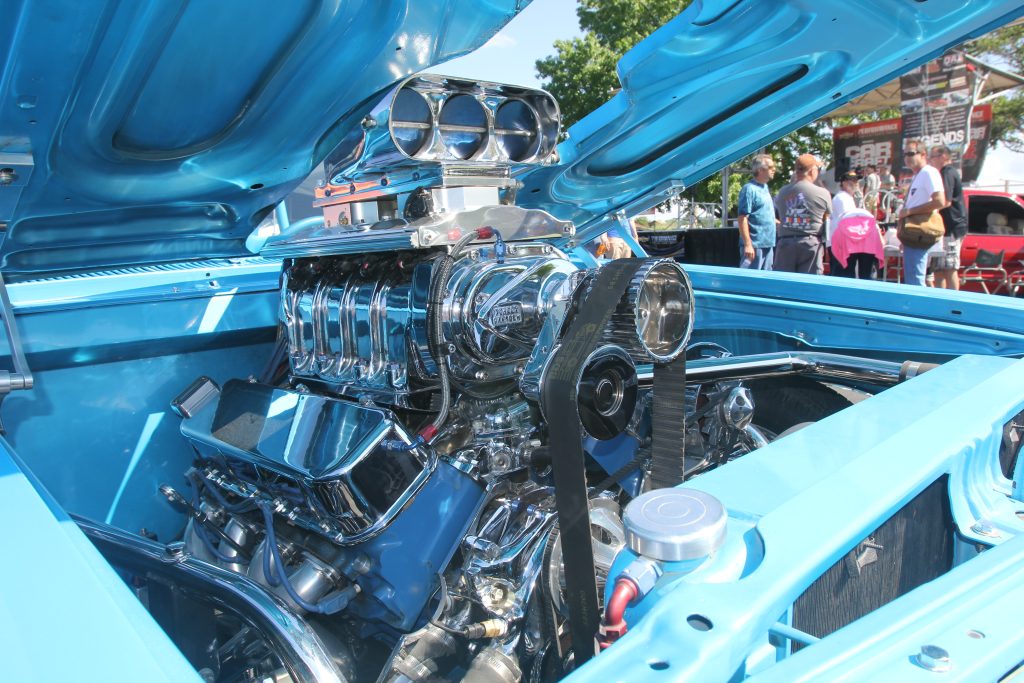This might be more of a generic question but my friends and I got into a discussion about boost and one of them said that more boost will always make more power because you have more pressure pushing more air and fuel into the cylinder. This didn’t sound right. Can you explain what’s going on here?
J.T.
This is a complicated, nuanced subject that we’ll try to condense into a (relatively) concise reply.
The simple answer for any supercharger or turbocharger, is that it’s designed to run within a certain range of optimized operation. This area includes shaft speed, how much air the supercharger or turbocharger is moving, and how much boost these power adders produce.
This is the reason why there are so many different sizes of superchargers, centrifugal superchargers, and turbochargers. There are literally hundreds of different sizes and configurations. Yet for a specific application, there will be fairly narrow range of ideal candidates.
Not sure of the distinction between forced induction methods? Read this: What’s the Difference Between a Turbocharger & Supercharger

Now let’s get more specific.
Let’s just say that we have a supercharger designed to move a set amount of air and produce 20 psi of boost. Boost is the pressure and is most often expressed in pounds per square inch (psi) but can also be given in inches of mercury (“Hg). In many cases a supercharger is merely moving more air than the engine can accept, so that this pressure builds up inside the intake manifold.
If the supercharger is then asked to spin faster by changing the pulley ratio, for example, then it will move more air than it did before. But it will also be making more heat because we are now spinning it faster than the designer intended. This additional heat is added to the normal heat created when pressure is added to a closed container. When a shop air compressor runs, if you put your hand on the large tank, it will feel warm. That’s because as pressure is added to the tank, the air naturally heats up because the air molecules are forced to be closer together, creating heat.
This increase in inlet air temperature (heat) is bad because a main operating premise is that, to make power, the air needs to be cooler—and therefore more dense. But as temperature increases, this lowers air density. So while pressure (boost) increases inside the engine’s intake manifold, so does the heat. This additional heat lowers the actual density of the air.
Air density can be described several ways. Most often it is used to evaluate the actual amount of oxygen in a given volume of air. Let’s say we have a one cubic foot container of air at standard temperature and pressure. This standard is 14.7 psi atmospheric pressure at 68 degrees F with zero humidity or zero vapor pressure. Now let’s compare that to the same container of air that has been heated to 150 degrees F but at the same atmospheric pressure.
The air in the second container will feature far fewer oxygen molecules because the molecules have expanded so they are farther apart. Conversely we have another one cubic foot container with air that is only 40 degrees F. The air in this container will be denser with more oxygen molecules.
The same thing occurs when we add pressure. Sure, we squeeze the molecules together so they are denser, but this added boost comes at the cost of additional heat—which is an inevitable consequence of squeezing the air. This has the direct affect of reducing the air’s density.
So with any supercharger or turbocharger, there is a point where the unit works most efficiently. This is where it creates a given amount of boost while adding the least amount of additional heat.
If we spin the blower faster, this creates more boost pressure but may also increase the amount of heat put into the air. This lowers the air density so that the net result of more boost (beyond its ideal level) becomes counter-productive to increasing power because the air is hotter and therefore less dense—even with the added boost.
That’s why, for a given supercharger or turbocharger, adding more boost at some point will result in less power because the air is less dense. Sure, it has more boost, but the temperature gain (and subsequent reduction in density) will negate any increase in power.
Plus, the other variable is that this higher boost requires more horsepower to spin the supercharger faster, which only results in even less flywheel horsepower.
If additional airflow and boost is necessary, this will require a larger supercharger or turbocharger that moves more air per revolution. This larger unit will work more efficiently at higher airflow numbers. Of course, this means it will not be as efficient at lower engine speeds—but that’s the compromise that must be made to make the increased power at those higher engine speeds.

Comments